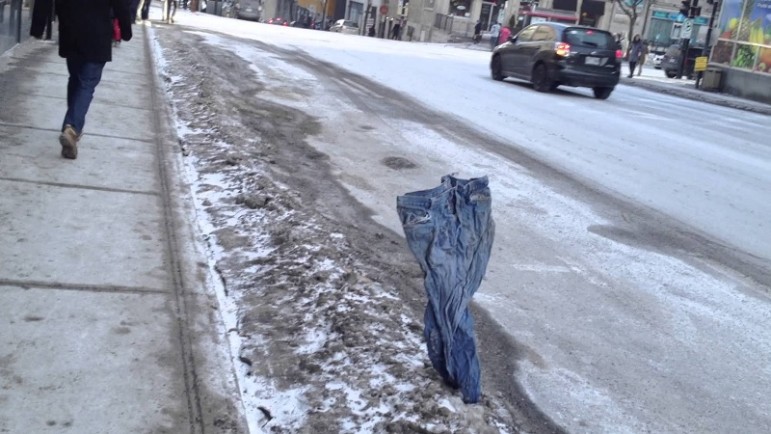
January 23, 2016; The Atlantic, “CityLab”
So, one function of public art is that it stops you and makes you think differently about your life, your day, your surroundings. We would submit that Tom Grotting’s little unfunded local public art project does just that.
It’s evidently Grotting’s frozen pants period. The materials are reclaimed, so the project is very environmentally friendly. Plus, the work is locally emotionally resonant, as anyone who has ever lived in a frigid place like Minneapolis can attest. (There is nothing more unattractive than a pair of frozen long underwear.)
Waiting for the city to warm up
Sign up for our free newsletters
Subscribe to NPQ's newsletters to have our top stories delivered directly to your inbox.
By signing up, you agree to our privacy policy and terms of use, and to receive messages from NPQ and our partners.
Grotting says he simply soaks a few pairs of jeans and hangs them for a bit. This makes them both malleable and able to take a stand independently. Sometimes, they peruse the horizon from roadside or lounge outside a neighborhood coffee shop, and sometimes he puts them in front of parking meters, where he can see people “awkwardly squeezing in between the frozen pants as they tried to fill the meter” near his work.
Is it an expression of the misery or the joy of winter? Who knows? But we all need a little relief in weather that will actually keep the pants where they are placed by the artist.—Ruth McCambridge













